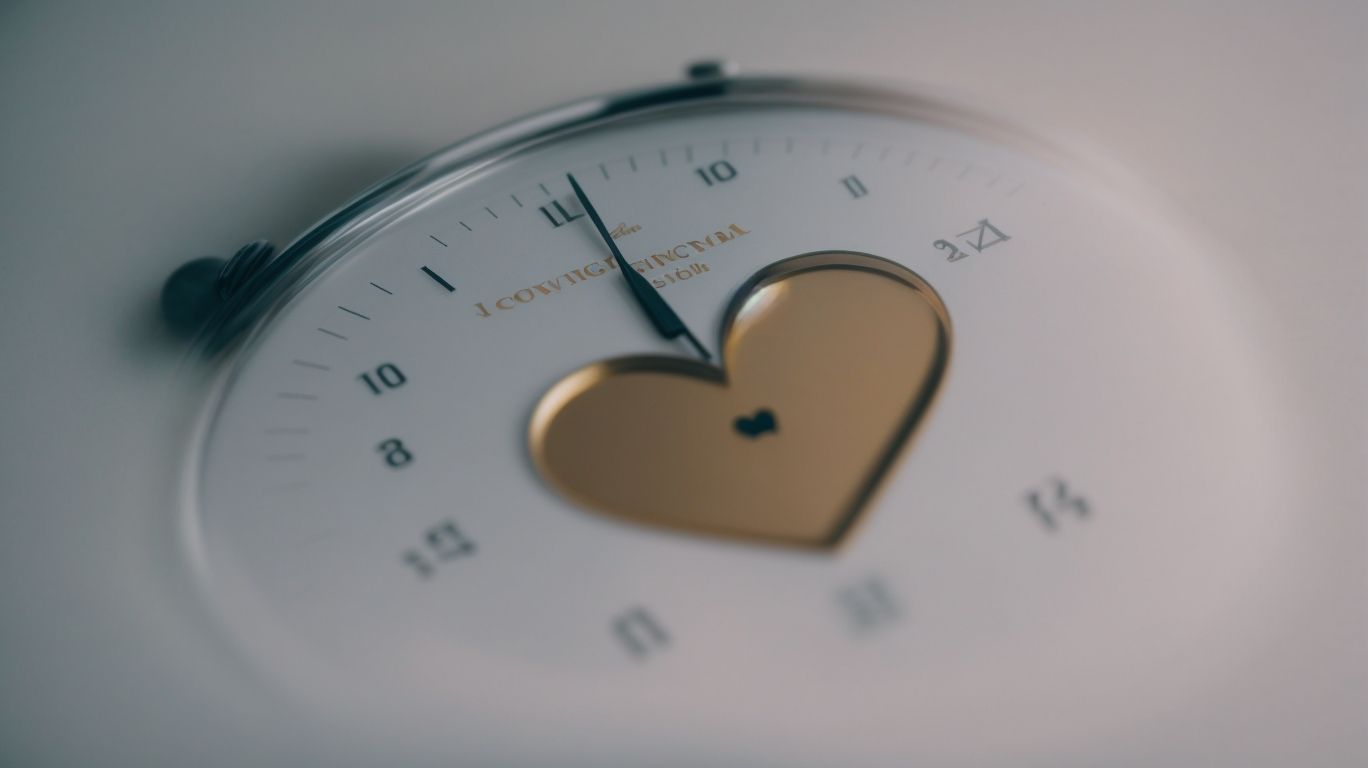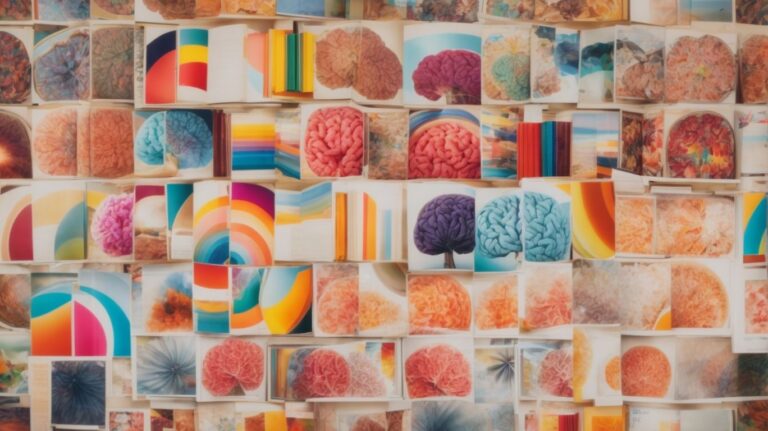Have you ever experienced the thrill of having a crush on someone? Crushes can come in various forms, from romantic to celebrity crushes. But what exactly are crushes, and how do they impact our thoughts and emotions?
In this article, we will explore the different types of crushes, the signs of having a crush, and the duration of crushes from a psychological perspective. So, buckle up and get ready to dive into the fascinating world of crushes!
Contents
- 1 What Are Crushes?
- 2 What Are the Different Types of Crushes?
- 3 What Are the Signs of Having a Crush?
- 4 How Long Do Crushes Last?
- 5 What Causes Crushes to End?
- 6 Frequently Asked Questions
- 6.1 What is a crush and how does it differ from love?
- 6.2 How long do crushes typically last?
- 6.3 What are the psychological reasons behind having a crush?
- 6.4 Can a crush turn into love?
- 6.5 Why do some people have crushes on multiple individuals at the same time?
- 6.6 How can the duration of a crush affect a person’s mental health?
What Are Crushes?
Crushes are intense feelings of romantic attraction or admiration towards a particular person, often characterized by a mix of emotions ranging from excitement to nervousness.
What makes crushes intriguing is the psychological impact they have on individuals. They can lead to daydreaming, increased heart rate, and an overall obsession with the person of interest. Crushes often bring a sense of joy and anticipation, but they can also cause anxiety and self-doubt.
It’s important to note that crushes differ from love in the sense that they are more focused on infatuation and fantasy rather than deep emotional connection and commitment. Understanding the nuances between crushes and love can help individuals navigate their feelings more effectively.
What Are the Different Types of Crushes?
Crushes come in various forms, including romantic crushes, celebrity crushes, friend crushes, and fantasy crushes, each involving different levels of emotional attachment and admiration.
Let’s delve into the world of these crushes and understand the dynamics associated with each type. Romantic crushes typically involve feelings of desire and affection for someone who may be a close acquaintance or a person admired from a distance, often accompanied by butterflies in the stomach and daydreaming about a potential romantic relationship.
Celebrity crushes, on the other hand, ignite admiration and fascination towards a celebrity or public figure, sparking a sense of connection despite the physical distance. Poring over their interviews, performances, or social media feeds becomes a regular indulgence.
Friend crushes bring a blend of admiration and platonic affection for a friend, characterized by a desire to spend more time together or to get to know them better on a personal level. The excitement of forming a deeper bond beyond friendship can be both thrilling and nerve-wracking.
Fantasy crushes embody the realm of imagination, where individuals develop romantic feelings for fictional characters, historical figures, or even abstract concepts. These crushes offer an escape into a world of idealized scenarios and emotional connections that may not be feasible in reality.
Romantic Crush
A romantic crush typically involves strong feelings of love and attraction towards someone, sparking emotional responses and desires for a deeper connection.
When someone experiences a romantic crush, they may find themselves caught up in a whirlwind of emotions, from excitement and longing to nervousness and butterflies in the stomach. It’s as if the mere thought of the person can brighten their day, and their presence can send their heart racing.
Attraction plays a significant role in fueling a crush; whether it’s physical, emotional, or intellectual attraction, there’s something about that person that captivates and draws the individual in. This attraction often leads to daydreams and fantasies about possible romantic scenarios and shared moments.
Celebrity Crush
A celebrity crush is when an individual feels intense attraction or admiration towards a public figure, often based on idealized fantasies and perceptions created by media exposure.
This phenomenon is fueled by the extensive coverage of celebrities in the media, which shapes our perception of them. Whether it’s through movies, TV shows, or social media, celebrities are constantly in the spotlight, portraying a curated image that can captivate and allure fans.
The allure of a celebrity crush lies in the idea of the unattainable; fans often project their desires onto these figures, imagining an idealized version of a relationship with them.
The dynamics of attraction towards public figures can be complex, influenced by factors such as charisma, talent, or physical appearance. Celebrity crushes can provide a temporary escape from reality, allowing individuals to indulge in romantic fantasies without the pressures of real-life relationships.
Friend Crush
A friend crush refers to a strong platonic admiration or emotional connection towards a friend, characterized by a desire to deepen the friendship and bond on a more intimate level.
Friend crushes often involve a deep appreciation for the person’s qualities, whether it be their sense of humor, kindness, or shared interests. This sentiment can lead to a heightened desire to spend more time together, share personal thoughts, and create meaningful memories. Over time, friend crushes may evolve, blurring the lines between friendship and romantic feelings, challenging individuals to navigate their emotions and establish clear boundaries. Communication becomes essential to address any shifts in dynamics, ensuring that both parties feel comfortable and understood.
Fantasy Crush
A fantasy crush involves feelings of attraction or infatuation towards an idealized or fictional character, often rooted in fantasies and emotional connections to imagined personas.
These crushes can provide an avenue for individuals to explore their desires and preferences in a safe, controlled environment. The idealization of these characters allows people to project their own desires onto them, creating a sense of escapism and fulfillment. In some cases, fantasy crushes may even serve as a coping mechanism, providing comfort and solace during times of stress or loneliness. It’s fascinating how fictional or idealized characters can evoke such strong emotional responses in individuals and impact their thoughts and behaviors in real life.
What Are the Signs of Having a Crush?
Recognizing the signs of having a crush involves observing various behaviors and emotional responses, such as butterflies in the stomach, constant thoughts, daydreaming, and nervousness.
Physical indications can also manifest, like blushing, increased heart rate, or a *strange sensation* when the person of interest is nearby. Your behavior might change too – perhaps you try to catch their eye or constantly seek opportunities to be near them. Emotionally, feeling a surge of happiness at their presence, yet also experiencing anxiety about making a good impression, often signifies a deeper emotional connection.
It’s quite common to find yourself analyzing every interaction and seeking validation or signs of reciprocation from the person you fancy. These signs combined indicate typical aspects of a crush.
Butterflies in Stomach
Experiencing butterflies in the stomach is a common sign of having a crush, characterized by a fluttery sensation or nervousness in response to being around or thinking about the person of interest.
This sensation, often described as a mix of excitement and anxiety, is triggered by a surge of hormones and neurotransmitters in the body. When someone is romantically interested in another person, the brain releases chemicals like dopamine and norepinephrine, which can lead to an increased heart rate, sweaty palms, and that distinctive feeling in the pit of the stomach.
Physiologically, this reaction is the body’s way of preparing for a potential reward, much like the fight-or-flight response but in a more positive context. It’s fascinating how our brains and bodies work in harmony to signal these emotions, signaling that something special may be on the horizon.
Constant Thoughts
Constantly thinking about the person you have a crush on is a clear sign of romantic attraction, as their presence in your thoughts becomes frequent and consuming.
These persistent thoughts often lead to a heightened sense of awareness whenever that person is around.
Emotions may fluctuate, ranging from excitement to nervousness, as your mind and heart are drawn to their presence.
This mental preoccupation can manifest in various ways, such as daydreaming about them, wanting to spend more time together, or feeling a flutter of anticipation when receiving a message from them.
Daydreaming
Engaging in daydreams or fantasies about the person you like is a common sign of having a crush, reflecting desires for emotional connection and romantic scenarios.
Daydreaming serves as a way for individuals to escape into a world where their unspoken emotions can run wild. It allows them to explore scenarios that may never unfold in reality, where they can express their deepest desires and sentiments freely.
These daydreams often revolve around unrealistic situations where the crush reciprocates feelings, confesses love in a grand gesture, or the two share intimate moments filled with laughter and deep conversations.
For many, these fantasies provide a temporary relief from the uncertainties of real-life interactions, offering a safe space to explore what they truly yearn for in their crush.
Nervousness
Feeling nervous or anxious around the person you like can be a strong indicator of having a crush, as the emotional intensity and attraction evoke physical and psychological responses.
When you have a crush, your body’s natural fight-or-flight response can be triggered when you’re around them. This can manifest in sweaty palms, a racing heart, or even stuttering speech, all signs of the body’s heightened state of awareness and excitement. The release of adrenaline can make you feel on edge and jittery, as your body prepares for a potential romantic encounter. The fear of rejection or not measuring up to your crush’s expectations can contribute to these feelings of nervousness, adding to the rollercoaster of emotions that come with having a crush.
How Long Do Crushes Last?
The duration of crushes can vary significantly, with short-term crushes lasting 1-4 weeks, medium-term crushes extending between 1-4 months, and long-term crushes persisting for 4 months or more.
Short-term crushes are often fueled by initial attraction or infatuation, typically peaking in intensity before gradually fading away. Medium-term crushes involve more emotional investment and may include a mix of excitement, anxiety, and longing over a more extended period. On the other hand, long-term crushes can become more deeply ingrained in one’s thoughts and feelings, sometimes evolving into genuine feelings of love or admiration.
Factors such as proximity, shared interests, and reciprocation of feelings can influence the length of crushes, intensifying or prolonging the experience. People may also go through various stages during a crush, from the initial fascination to heightened daydreaming, and potentially to acceptance or moving on.
Short-term Crushes (1-4 Weeks)
Short-term crushes typically last 1-4 weeks, characterized by fleeting infatuation, heightened emotions, and a temporary surge of attraction towards a person.
During this period, individuals often find themselves daydreaming about the crush, experiencing butterflies in the stomach, and feeling a constant sense of anticipation when around them.
These crushes can be intense and all-consuming, leading to fluctuations in mood ranging from euphoria when receiving attention from the crush to moments of uncertainty and nervousness.
While short-lived, the emotional rollercoaster ride of a short-term crush can be both exhilarating and exhausting at the same time.
Medium-term Crushes (1-4 Months)
Medium-term crushes typically last between 1-4 months, encompassing a prolonged period of attraction, emotional investment, and the potential development of deeper feelings.
During this timeframe, one might experience an initial surge of excitement and nervousness in the presence of their crush, often accompanied by a heightened awareness of their actions and a desire to impress. As the crush progresses, hormonal influences can play a significant role, leading to intensified emotions and a heightened sense of infatuation.
Over the course of several months, the intensity of the crush may fluctuate, with moments of exhilaration and longing followed by more subdued periods of reflection and contemplation. As the relationship evolves, individuals may find themselves experiencing a deeper emotional connection and a growing desire for reciprocity.
Long-term Crushes (4+ Months)
Long-term crushes can extend beyond 4 months, signifying a sustained period of emotional attachment, ongoing feelings of admiration, and a deeper connection to the person of interest.
As time progresses, a long-term crush can lead to a range of complex emotions and experiences. The allure of the crush may intensify, creating a sense of longing and anticipation. In some cases, the crush becomes a source of inspiration, fueling creativity and personal growth. It is essential to strike a balance to prevent the crush from becoming consuming or detrimental to one’s well-being.
What Causes Crushes to End?
Crushes can come to an end due to various reasons, including rejection, lack of communication, the passage of time, and the process of moving on.
Rejection is a significant factor that can lead to the demise of a crush. The feeling of not being reciprocated can be emotionally challenging, prompting individuals to reconsider their emotions. The communication breakdowns can create misunderstandings, causing distance between the individuals involved.
As time passes, feelings may evolve or fade away, affecting the intensity of the initial crush. The psychological process of moving on plays a crucial role in accepting reality and letting go of unrequited feelings.
Rejection
Rejection plays a significant role in ending crushes, as unreciprocated feelings can lead to emotional distress, self-reflection, and the initiation of the moving-on process.
For many individuals, rejection from a crush can trigger a whirlwind of emotions, ranging from sadness and disappointment to frustration and even anger. It’s common for people to question themselves, wondering what they could have done differently or why their feelings weren’t returned. This self-evaluation phase can be both enlightening and challenging, as it forces one to confront their vulnerabilities and insecurities.
As time passes, most individuals find ways to cope with rejection and unrequited feelings. Some choose to channel their emotions into constructive activities like journaling or exercising, while others seek support from friends and family to help them navigate through the heartache.
Lack of Communication
A lack of communication can contribute to the demise of crushes, as the absence of meaningful interaction or misunderstandings can create barriers to emotional connection and relationship development.
When there’s a lack of open and honest communication, it becomes challenging for individuals to express their feelings, desires, and concerns to the other person.
Effective communication is the cornerstone of any successful relationship, whether it’s a budding crush or a long-term partnership. Without clear lines of communication, doubts can fester, assumptions can be made, and conflicts can arise unnecessarily.
This breakdown in communication not only hinders the growth of feelings but also impacts the overall dynamics of the interaction, leading to missed opportunities for deeper connections.
Time and Distance
The passage of time and physical distance can also contribute to ending crushes, as changing circumstances, life events, and geographical separation may diminish emotional connections.
When someone you have a crush on moves away, the dynamic of your interactions shifts. The spark that once existed may fade as you both navigate separate paths and create new connections. It’s fascinating how physical distance can play such a significant role in altering feelings.
Similarly, as time passes, people change and grow, which can impact how you perceive your crush. Personal growth can lead to different desires and interests, making the initial crush feel less intense or relevant.
Moving On
Moving on is a crucial step in ending crushes, involving acceptance, emotional closure, and the redirection of romantic feelings towards new experiences or individuals.
When attempting to move away from a crush, it’s essential to acknowledge the feelings involved and give yourself the space to process them. One may find it helpful to engage in activities that bring joy and foster personal growth, potentially leading to a clearer perspective on the situation. Self-care practices, such as exercise, mindfulness, or creative pursuits, can aid in nurturing emotional well-being and building resilience. Setting healthy boundaries by limiting contact with the crush and focusing on personal goals helps in creating a sense of control and give the power toment in the process. Ultimately, moving on from a crush is a journey towards self-discovery and emotional maturity.
Frequently Asked Questions
What is a crush and how does it differ from love?
A crush is a short-lived infatuation or admiration for someone, while love is a deeper, long-lasting emotional attachment.
How long do crushes typically last?
The duration of a crush can vary greatly, but on average, it lasts anywhere from four months to a year.
What are the psychological reasons behind having a crush?
Crushes are often a result of projection, where we idealize a person and see only their positive traits while ignoring any flaws. They can also be a way for our brains to explore and experience new emotions.
Can a crush turn into love?
Yes, a crush can develop into love if there is a strong emotional connection and mutual feelings between the two individuals. However, it is not always the case and sometimes crushes remain as temporary infatuations.
Why do some people have crushes on multiple individuals at the same time?
This can be due to a person’s need for validation and attention, or it could be a way to avoid committing to one person and potentially getting hurt.
How can the duration of a crush affect a person’s mental health?
While having a crush can bring feelings of excitement and happiness, if it lasts for too long, it can lead to frustration and disappointment, leading to a negative impact on one’s mental health. It’s important to manage expectations and focus on realistic emotions rather than idealized fantasies.



